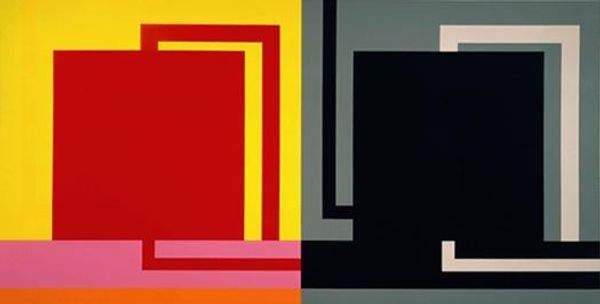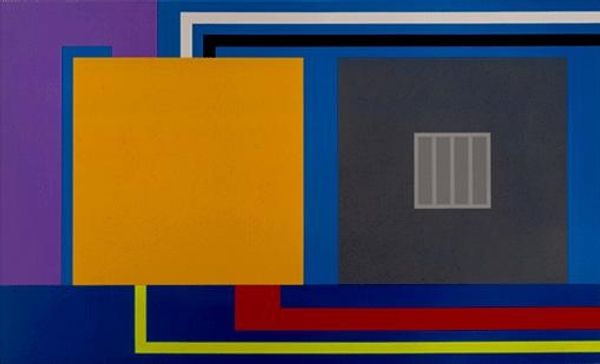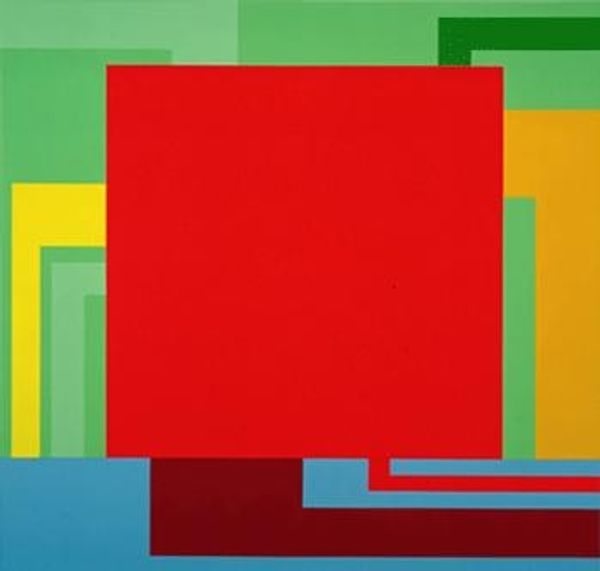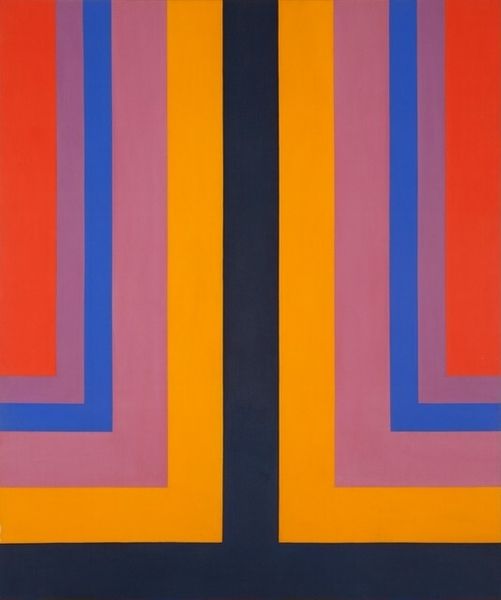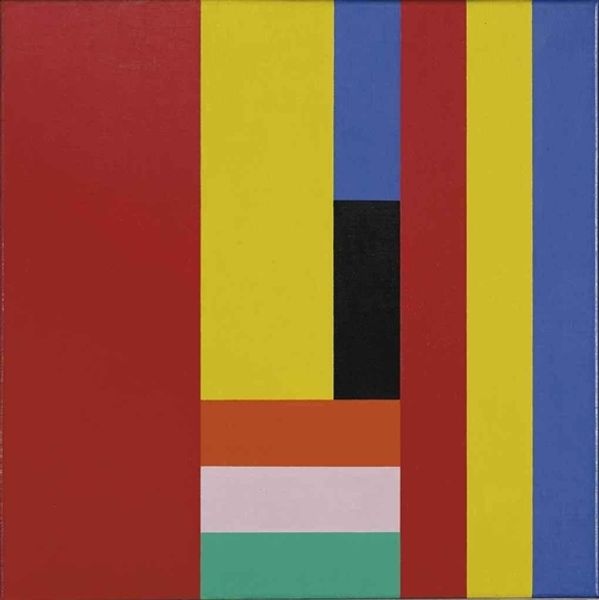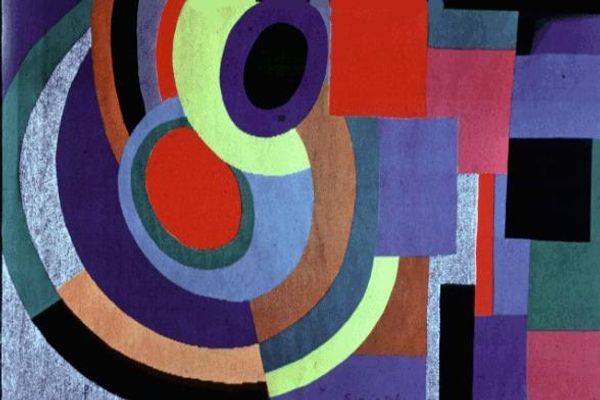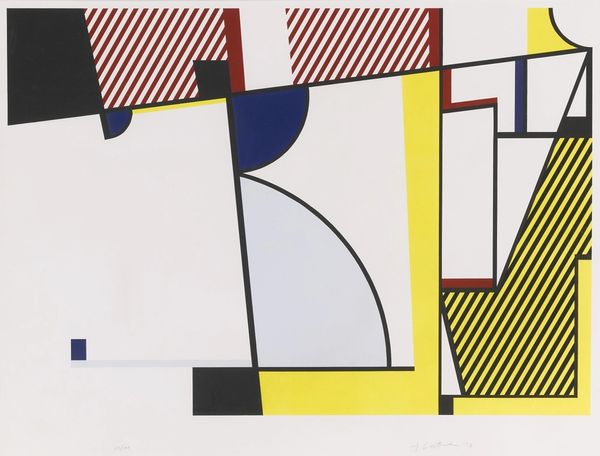
Copyright: Peter Halley,Fair Use
Curator: Before us we have Peter Halley’s, “Cartoon Network”, an acrylic-paint on canvas work created in 1997. Editor: It's surprisingly cheerful, isn't it? Despite the rigid geometry. The colors pop, reminding me of retro graphic design, maybe early computer interfaces. Curator: The title’s reference is key. Consider how popular media—and its means of mass distribution—affects contemporary notions of spatial relations. Halley appropriates the visual language of networks, reducing them to basic shapes and bold colors. The "cells" and "conduits" mimic an abstracted circuit board. Editor: And speaking of color, that lavender square seems to want to flatten out and become a textile... or commercial packaging! I think the choice of industrial acrylic and a large canvas further links this to production and commodity culture of the time. Curator: Exactly. Halley positions us to reconsider how social structures are built on a visual grid of technology. How those systems dictate how we consume our world via commodification. Editor: This work could very easily appear as mere colorful shapes. I find the relationship between Halley's theory-influenced vision and what an average viewer internalizes rather interesting, no? Is this just formal experimentation? Decoration? Or pointed socio-political commentary cleverly disguised? Curator: Well, in art historical discourse, there's always going to be some debate over his position and reception within museums and galleries; yet, the painting definitely operates in a symbolic field, prompting critical thought regarding late 20th-century anxieties about information control and spatial confinement. Editor: I agree that the interplay between its surface appeal and underlying implications keeps me engaged and wanting to discuss those historical and material contexts further. Curator: Definitely food for thought, inviting further contemplation long after we've left it.
Comments
No comments
Be the first to comment and join the conversation on the ultimate creative platform.
